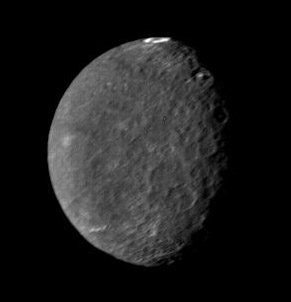Datei:Umbriel (moon).jpg
Umbriel_(moon).jpg (291 × 302 Pixel, Dateigress: 25 KB, MIME-Typ: image/jpeg)
Dateiversiona
Wensd auf an Zeitpunkt klickst, nacha konst a friaane Version lodn.
| Version vom | Vorschaubuidl | Dimensióna | Nutzer | Kommentar | |
|---|---|---|---|---|---|
| aktuell | 01:08, 15. Aug. 2005 |  | 291 × 302 (25 KB) | Vzb83~commonswiki | cropped image |
| 20:44, 30. Apr. 2005 |  | 400 × 400 (7 KB) | Bricktop | uploaded missing image | |
| 23:18, 4. Apr. 2005 |  | 252 × 252 (24 KB) | Smartech~commonswiki | '''Original Caption Released with Image''': The southern hemisphere of Umbriel displays heavy cratering in this Voyager 2 image, taken Jan. 24, 1986, from a distance of 557,000 kilometers (346,000 miles). This frame, |
Dateivawendung
Seitn wo de Datei nutzn:
Globale Dateinutzung
D'noochéfóiganden åndern Wikis vawénden dé Datei:
- Vawendung af af.wikipedia.org
- Vawendung af als.wikipedia.org
- Vawendung af ar.wikipedia.org
- Vawendung af ast.wikipedia.org
- Vawendung af az.wikipedia.org
- Vawendung af be-tarask.wikipedia.org
- Vawendung af bg.wikipedia.org
- Vawendung af ca.wikipedia.org
- Vawendung af ceb.wikipedia.org
- Vawendung af ckb.wikipedia.org
- Vawendung af cs.wikipedia.org
- Vawendung af cy.wikipedia.org
- Vawendung af da.wikipedia.org
- Vawendung af de.wikipedia.org
- Vawendung af de.wikibooks.org
- Vawendung af el.wikipedia.org
- Vawendung af en.wikipedia.org
- Vawendung af eo.wikipedia.org
- Vawendung af es.wikipedia.org
- Vawendung af et.wikipedia.org
- Vawendung af eu.wikipedia.org
- Vawendung af fa.wikipedia.org
- Vawendung af fi.wikipedia.org
- Vawendung af fr.wikipedia.org
Weitere globale Verwendungen dieser Datei anschauen.


